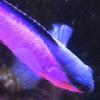-
Topics
-
Latest Update
-
0
WTS Beginner Softies
Speckled Krak and Green and Golden Clove $20 Pulsing Xenia $10 Captain Jerk $10 Ironman Mushroom $10 pp GSP $5 Nuclear Green $5 Green Mushroom $5 Green and Golden Clove $15 -
0
Wts Fish
Grey angelfish 7" $500 Yellow bar angelfish 7-8" $250 Banner fish 4-4.5" $50 cream angelfish 3.5" $45 Doctor tang 7-8" $60 Purple tang 3.5-4" $150 Naso tang 6-7" $80 Naso vlamingii 6" $60 Mata tang 5-6" $30 Monster trigger 3-3.5" $20 Sunburst Butterfly 3" $15 All fish with me minimum 3 years. All eating aggressively on everything. collection from Hougang and bring your own bucket. Interested pm Or WhatsApp @ 82014328 -
12
WTS Corals
Up for some frags. Spiral nauti monti $25 Sunset monti $20 Green monti $10 Pink pavona mini colony $35 Lepto $20 Meteor shower cyphastrea $20 Cpt jerk paly (full face yellow) $8 -
-
1
-






Recommended Posts
Join the conversation
You can post now and register later. If you have an account, sign in now to post with your account.